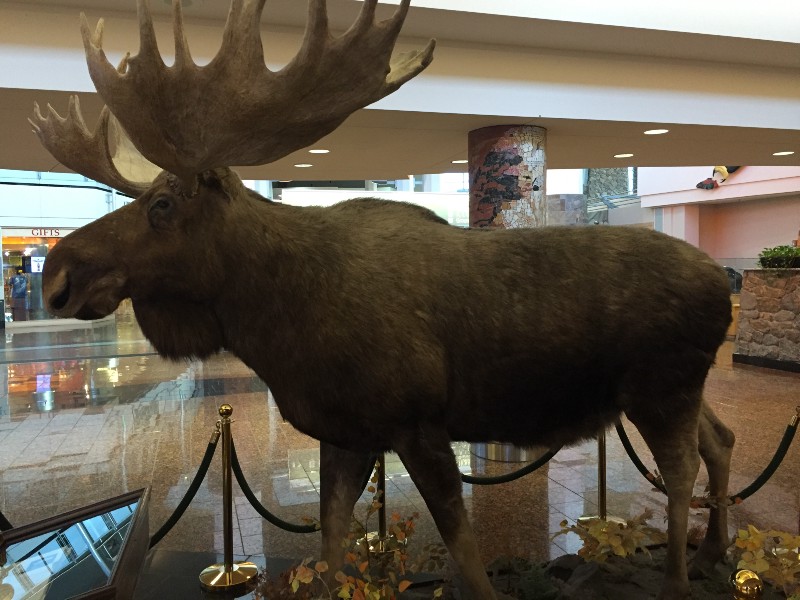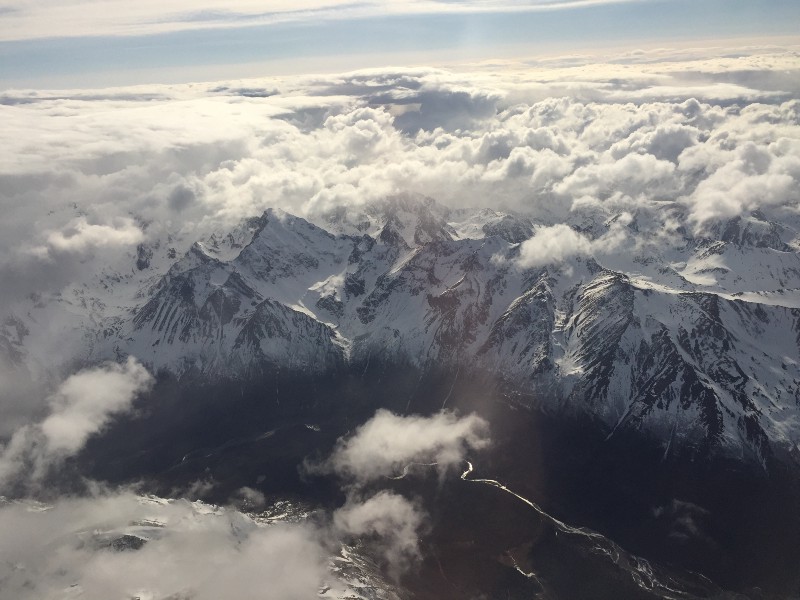
This guy waits to greet visitors at the Anchorage Airport!
This morning our team departed for Alaska. For some reason, these trips to Oliktok Point always start out on an unpredictably stressful note. When departing for the first trip in October 2014, I misread the RTD SkyRide AB (airport bus) schedule and ended up having to sheepishly call my family at 6:30 in the morning for a ride to the airport. The day before the second trip (last August), I was rear-ended the day before leaving. This time around, the SkyRide AB bus showed up late (albeit by a few minutes) and subsequently offloaded all passengers and baggage at the Table Mesa bus station (which is still in Boulder). After a few nervous minutes, Phillip and I boarded the replacement bus and made it to the aiport a few minutes later than planned, though fortunately still well in advance of our departure.
The flight up to Anchorage was also a bit delayed, but further uneventful. In general it was a beautiful day for flying and we got some great views of the Rockies, the Cascades, pacific northwest volcanoes, and coastal Canada. After arriving in Anchorage, we made our way over to the hotel, grabbed some dinner and settled in for a somewhat early evening. Tomorrow morning, we depart Anchorage at 7:45 for the North Slope, where things have warmed up a bit since this morning. Good thing, because at that time it was -25 F with a wind chill below -40 F!

On approach to Anchorage Airport. Every time I fly into this airport I’m glued to my window.
Since the day itself is somewhat uneventful, I thought that I’d provide a bit of background on our team. With the bigger plane, we are bringing a team of four to conduct flight operations. This team includes myself, Doug Weibel, Tevis Nichols, and Phillip D’Amore. Since completing his PhD, Doug has been working in the Aerospace Engineering department at CU. He recently took a position as a senior research professional as part of the Integrated Remote and In Situ Sensing Initiative (IRISS) at CU. Doug has substantial piloting experience both with manned and unmanned aircraft and his knowledge of the systems we’re using will be tremendously valuable for the campaign. Tevis is a PhD student in CU’s Aerospace Engineering department and also has a good amount of experience with the Pilatus and its autopilot system. Interestingly, as part of his dissertation work, he is attempting to develop new technology aimed at providing improved wind estimates from small unmanned aircraft — something I am of course very interested in! Finally Phillip is a M.S. student at CU and has been working hard to get up to speed on our instrumentation and payload. Additionally, he has a good amount of experience with the DataHawk, which we also have with us for this deployment. Phillip has previously spent time working at NOAA’s Earth System Research Laboratory, where my office is located.
Tomorrow the fun begins — looking forward to getting up there!
